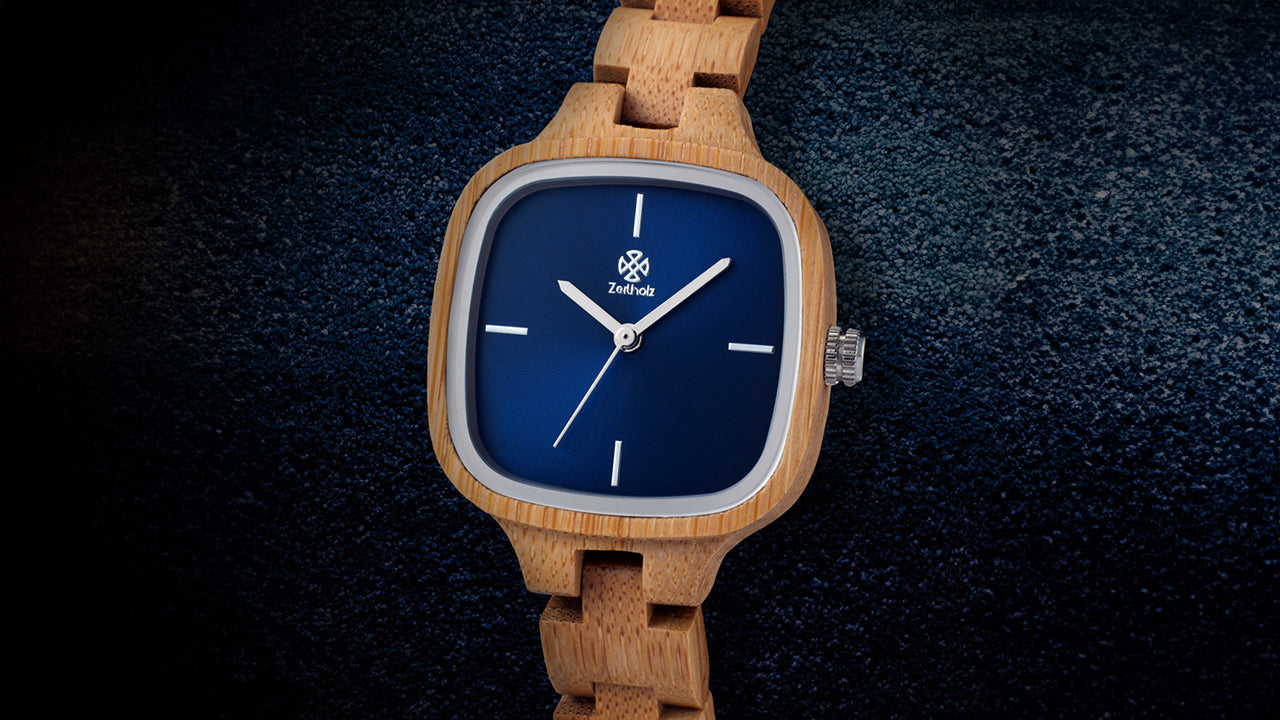Your Cart is Empty
SUMMER SALE: UP TO 30% OFF SITEWIDE
SUMMER SALE: UP TO 30% OFF SITEWIDE
SUMMER SALE: UP TO 30% OFF SITEWIDE
SUMMER SALE: UP TO 30% OFF SITEWIDE

June 10, 2024 3 min read
Watch crystals are the clear covers that protect the watch dial from any harm, regardless of their material. These crystals are made from various materials, each chosen for benefits like scratch resistance, affordability, and durability.
Watch crystal glasses are made of materials such as acrylic, mineral, or sapphire glass, and they can also include hybrid options like sapphire-coated mineral glass.
In this guide we will explore the most popular types of watch crystals, including those that we use at Zeitholz Watches, detailing their benefits, drawbacks, and the best way to choose them and take care of them.
From acrylic to advanced sapphire models, the development of watch crystals reflects the evolution of watchmaking.
Originally made from easily moldable and inexpensive acrylic, the industry has moved towards materials that provide greater resistance to everyday wear and tear, meeting the demands of luxury and precision in modern timepieces.
Acrylic, a plastic polymer, is lightweight and exceptionally shatter-resistant, making it ideal for lower-budget or vintage watches, where the cost and nostalgic appearance are prioritized.
Mineral crystals are made by heat-treating glass to increase its scratch and impact resistance. Common in mid-range watches, mineral crystals offer a balance between cost and resistance to wear.
Composed, in most cases, of synthetic sapphire, these crystals are highly scratch-resistant and clear, used predominantly in luxury watches where durability and clear visibility are critical.
This hybrid type, used in all the Zeitholz Watches, combines a mineral base with a thin layer of synthetic sapphire coating to enhance scratch resistance while keeping costs lower than full sapphire crystals.
An excellent choice for those seeking a compromise between the durability of sapphire and the affordability of mineral crystals.
Choosing a watch crystal depends on balancing lifestyle needs, budget constraints, and aesthetic desires.
Consider the type of daily activities you engage in, the amount of wear and tear the watch will likely endure, and how much you are willing to invest in durability.
Proper care can extend the life of any watch crystal:
Consider replacing your watch crystal if significant damage obscures the dial or if the structural integrity of the watch is compromised.
This is crucial not only for aesthetic reasons but also to ensure the continued protection of the watch's internal components.
Identifying the type of watch crystal can help in maintaining and caring for it properly:
The choice of watch crystal is crucial in determining the lifespan and functionality of your watch. Understanding the different types of crystals—including the innovative sapphire-coated mineral—and their respective benefits allows for informed decision-making tailored to your lifestyle and watch-wearing habits.
If you want to see our selection of sapphire-coated mineral crystal watches, please check our collections for men and women.
Be the first to know about upcoming sales and special offers. Get a 10% discount coupon when you sign up!